What causes swirl marks on car paint? Really, what causes the most common forms of damage on car paint may be an even better question! Why? Even though swirl marks may be the most known example of car paint damage, it is not the only one to be concerned with.
Modern paint finishes on automobiles are made up of 3 parts of paint that when put over the substrate of the body makes up what we know as “car paint”. Modern paint finishes start with a primer that ensures a proper bond of the paint to the substrate. A layer called the base coat is put on top of the primer and it is the part that actually has the color/pigment that makes your car a certain color. Finally, a layer called the clear coat is put on top of the base coat. The clear coat is the thickest layer and is clear. It’s primary role is to protect the base coat. These are the 3 common layers of paint on modern paint finishes and there’s a very good chance this is how your car’s paint is made up.
Before we get too deep into the topic let’s learn a bit more about the intensity of paint damage in modern paint finishes.
Superficial damage to your paint would be damage that is only in the clear coat. It is superficial because it does not penetrate lower and your paint still has, for the most part, the protection it needs. Major damage would be damage that has penetrated below the clear coat (see paint cutaway image below). Superficial damage can be repaired to a great degree, if not to perfection. Major damage may not necessarily be repaired without bodywork or repainting of some manner.
The purpose of this piece is to educate you as to what causes the most common forms of damage to modern automotive paints, how they can be repaired and what can be done to protect your paint moving forward. Most of the concepts outlined actually are avoidable and with some measure of effort, you can keep your car’s paint looking incredible for many years to come.
Swirl marks, marring, holograms and other mechanical damage
This type of damage to car paint/clear coat is caused by a mechanical movement. Typically, it means an abrasive is placed on the body of the clear coat and mechanically driven across the surface with some measure of force. The result, no matter how big or small, is actually a scratch.
Improper Hand Washing
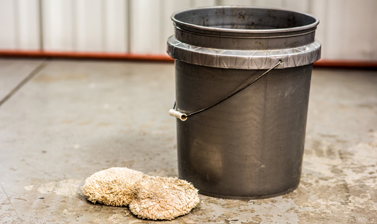
In this picture alone we can see a wash mitt that was on the ground. How anyone could use that mitt for anything but to weigh down the inside of a trash bag I don’t know. But the reality is that many shops use old and ratty wash mitts on car paint. Of those wash mitts, there are countless stories of mitts that fall on the ground being used on car paint and scratching it up. Poor car washing is not limited to gross neglect like this though.
Proper car care is using grit guards in wash buckets, clean wash media/mitts, quality body wash and more. My shop carries some of the best car care products available for retail purchase. But for those not local, feel free to use the following links to purchase quality detailing products:
Grit Guards (get 2)
P21S Total Auto Wash Degreaser
Professional Grade Electric Pressure Washer
Using Cheap or Dirty Towels to dry Your Paint

This really goes hand in hand with improper washing techniques. Using cheap microfiber towels can be harsh on paint due to their low GSM(Grams per Square Meter) count or lower quality material construction. The GSM identifies the weight of the towel, or how much fiber is within a square meter. Generally speaking, higher GSM microfiber towels are not inexpensive. But going with a plusher microfiber towel means you have more built in safety when using it against your fine paint.
Dirty towels have debris embedded in them and that debris being driven into and against your delicate clear coat can create substantial damage.
The edges of a towel can also affect the paint’s surface. A stitched edge can potentially have harsher thread that will mar paint. A silk edge is soft but also does not have a thick nap to capture debris. An edgeless(microfiber material all the way out to the edge) towel of quality construction is usually the best option.
Use of Automatic car Washes
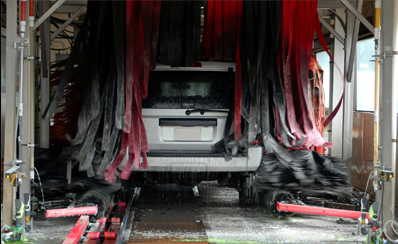
Automatic car washes are the scourge of good paint health. The automatic car washes with media that touches the car(brushes or strips of fabric) are harmful to your paint. They cause harsh scratches and marring. Touchless car washes are either too weak and do not thoroughly clean the surfaces or they use chemicals that are stronger than ideal to replace the need for a physical hand wash.
For the automatic car washes that have a rail system guiding your car through the bay. These can also cause extensive damage to wheel faces.
My opinion is to dodge automatic car washes like the plague. Too, be sure to tell your service advisor at the dealership you have your car serviced at that your car is to not be washed. Many dealerships provide this “service” at no cost and believe they are doing their clients a favor.
Improper use of Polishing Machines on Your Paint

The improper use of rotary machines on automotive paint will generate scratches, marring and an effect called “holograms” or “buffer trails”. Holograms are generally created when someone does not finish down a compound or polish product properly. The look of a hologram is caused by microscopic directional marring and is typically found in an arcing shape in which the operator moved their arms while pivoting in place.
There is no need to fear a skilled technician using a machine to correct your paint. There is however a reasonable fear of not having a skilled technician working on your car though.
Bird Droppings and Bug Guts

Many car owners are not aware quite how harmful these organic substances are to paint finishes. In the matter of seconds, if a bird makes a mess on your hot summer sun baked paint, it can instantly cause etching in the paint. The same can be said of ramming a bug while traveling down the road. The organic make up of bug guts and bird droppings can be very acidic and damaging to sensitive clear coat finishes.
The best route if you encounter these substances on your car is to safely remove them as quickly as possible.
Industrial Fallout, Pollution, Acid Rain

All three of these substances are closely tied together. Industrial pollution makes its way into the atmosphere where it then makes it way back down onto your paint in the rain. For car owners living in metropolitan areas, this is more of a concern due to the proximity to air pollution.
When the acid rain dries on your paint, reactive chemicals are left to dry on the outer edges of the water droplets. These concentrated rings of pollution are then able to more easily etch the clear coat of the paint leaving you with an outline of the acid rain drops.
Washing hot paint or allowing water to air dry after a car wash (high mineral content water issues)
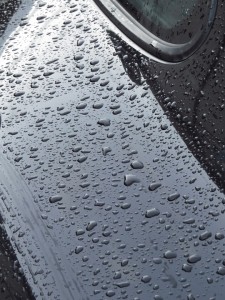
Washing hot paint tends to cause issues with chemical film drying on the surface. Think of using a shampoo or degreaser to clean a surface. If the surface is hot the water will dry prematurely leaving a chemical residue. If the chemical you are using is reactive with the clear coat it can bond with the paint or possibly cause spotting on different surfaces.
Allowing a car to air dry naturally after washing it is similar to the industrial fallout issues. Any minerals in the water will suck to the outside of the water drop and dry in place. This can cause either a mineral deposit which can be difficult to remove or it can cause etching of the clear coat.
Use of harsh chemicals

When we speak of harsh chemicals, what are we saying? We are talking about reactive chemicals. For instance. A chemical that has a very high pH(basic/alkaline) or a very low pH(acid) can be reactive with painted surfaces. Whether we are talking about your skin, eyes or the paint, reactive chemicals are bad. The use of chemicals not intended for automotive surfaces can cause major corrosive damage. Be sure to read the instructions on each product used on your car. Most products will have a maximum dwell time. Know the limits of the different products you use and always be sure to use the right product for the right surface.
Above Surface Defects
Overspray bonding

Overspray is the result of atomized chemicals misting/dusting onto the paint(and other surfaces), solidifying and then becoming a bonded substance. Sometimes overspray can be dissolved with the right chemical and sometimes it requires mechanical removal. Mechanical removal would be where you have to physically rub the surface with a wash mitt, clay bar or a decontamination pad. The more aggressive one must be to remove overspray, the more marring/scratching will be created and need to be repaired with paint correction.
Tree sap
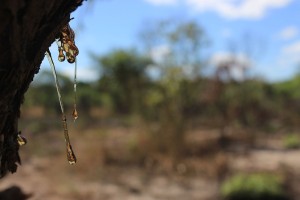
Tree sap, when fresh is easily cleaned off with a citrus based degreaser and sometimes just a handwash. But if left to cure, it can literally become a part of the paint. After some time, tree sap will cause clear coat fracturing. These are tiny little cracks in the clear coat. They are unsightly and very harmful to the lifespan of your paint.
Road film

Road film is the buildup of grime from driving on the road. In the northern states, road film can contain salts that are used to make roads usable during the winter months. But even southern states can have nasty road film buildup. Road film can contain tar, petroleum/oil/grease, harsh brake dust, metals and any other chemical that can spill onto the road.
Road film can bond creating a hard layer that is difficult to clean and can stain surfaces. Road film can also contaminate your wash media and lead to paint damage.
What causes paint defects? Now you know…but that doesn’t help you with the damage already created. How can the damage already on your paint be addressed?
There are 2 categories of clear coat damage on modern paint. One is above surface and the other is below surface. Above surface defects would be overspray and bonded contaminates. The below surface defects would be etched paint, swirl marks, deep scratches and holograms.
Being able to identify the type of defect you have is key in addressing the defect. Above surface defects should be decontaminated and stripped away. Below surface defects will require paint correction to level the surface down, permanently repairing those defects.
Before these steps can be taken though, one needs to remove all products that could artificially enhance the paint. In the detailing world, it is common place for shops to use products primarily intended to mask defects. These products are easy and very fast to use. The problem is that when these products eventually wash out, you are still left with your defects. Thus begins a nasty cycle of masking surface defects a few times per year when that should not be necessary at all.
Removal of filler products(wax, sealants, glazes, polish residues, etc.) may even reveal more defects that were hidden. While it’s not the most favorable thing to think of. At least once you are looking at the true condition of the clear coat you can begin to create a long lasting solution to have your car looking the best it’s ever looked and get it protected!
Once paint correction has been performed, you will be back to a smooth and highly refined paint surface. It should have a better luster and color, the reflections should be sharper and it will be buttery smooth. But the clear coat is also very exposed to the elements at this stage.
After the paint correction process, you should begin looking into having the paint protection applied. There are countless options for paint protection at this step. Which ones are best for you? We will review some of these options, how they work and how they can even work together for incredible protection and luster. We will begin with the easiest and least expensive options that protect the least and proceed up towards the best of the best.
1) Spray wax
Spray waxes are common in volume detail shop. The price is commensurate with the results. They may last days to weeks depending on the conditions and product used. The protection spray waxes offer is bordering non-existent. Unless you already have another form of protection on your car, a spray wax is a waste of effort and you should pass. As a quick-to-use buffer over other protections, a spray wax can fit the bill.
2) Silica sprays
Modern silica sprays are easy to use and may last months. The protection they offer is leaps better than spray waxes. User beware though! Many of these sprays contain a high silicone content which may increase congestion of the surface leading to requiring decontamination treatments more often.
3) Carnauba waxes
Carnauba waxes can be inexpensive or may cost over $1,000 for a jar of the highest quality waxes. Carnauba waxes are an experience for car enthusiasts that enjoy doing everything on their own. While waxing is not necessarily the quickest process, it is easy. Quality waxes can provide a beautiful luster on paint. Wax also has a natural ability to minimize the appearance of below surface defects by filling them in. Protection can last a few weeks or months depending on the exposure and elements the surfaces are exposed to.
4) Synthetic polymers (sealants)
Sealants provide a nice bang for the buck to the user as they can last months and are easy to apply. They offer, as a whole, superior protection to waxes.
5) Professional ceramic paint coatings -as rendered HERE
Professional ceramic paint coatings are inorganic, and hybrid silica/glass coatings that are applied to painted surfaces, paint protection film and wheels/calipers. Surfaces protected by ceramic coatings replace the need to wax or seal the paint. They create a membrane many times thicker than waxes. Where waxes sit on paint around .1 micron in thickness, our thickest ceramic coatings create a membrane as thick as 5+ microns! With proper care, our professional-grade ceramic paint coatings provide many years of superior protection.
Our professional-grade ceramic coatings are chemically resistant, protect against oxidation and acids and they offer a hydrophobic or hydrophilic surface that is easier to clean than the alternative. And because we offer several different coatings for paint and multiple options for wheel/caliper protection(along with other coatings for other surfaces on automobiles), they will have the perfect fit for every paint.
6) Paint protection film -as rendered HERE
Paint protection film, as a stand alone product, gives the ultimate in protection for paint. No other technology offers the impact resistance and scratch protection paint protection film (AKA “PPF” & Clear Bra) offers. Paint protection film is many times thicker than all paint layers together and because it is modular in nature, when the film gets beat up to the point you no longer like the looks, a single piece can be replaced.
7) Paint protection film with our professional-grade ceramic paint coating layered on top -as rendered HERE
For getting the best of the best, nothing tops a paint protection film wrap topped with our ceramic paint coating over it. This gives the owner impact resistance along with chemical resistance and a surface that is as easy to clean as is possible. To cap it off, the gloss and shine possible with a ceramic coating makes is the icing on the proverbial cake.
I have included the rendering of the paint cut away to give you a visual on what is happening with below surface defects that require paint correction and how paint correction levels those defects. It also includes a visual for how one may go with a ceramic paint coating, paint protection film or a combination of paint protection film and a ceramic paint coating.
Hopefully, your time was well spent reading this article on surface defects, what causes them, how they can be fixed and how you can protect your paint moving forward.
My name is Jean-Claude Corcoran and I am the owner of Detailed Designs Auto Spa, which is located just outside of Atlanta in Conyers, GA. If you are in the area, feel free to reach out to us if you would like to learn more about what options are available to take care of your personal automotive needs.
Thanks for reading and be sure to share if you enjoyed the article!
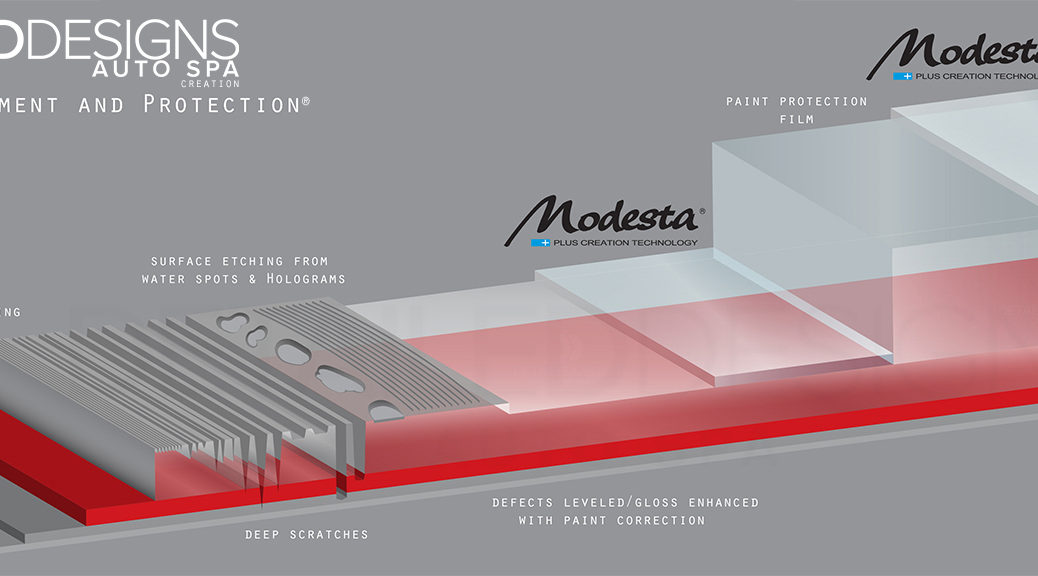
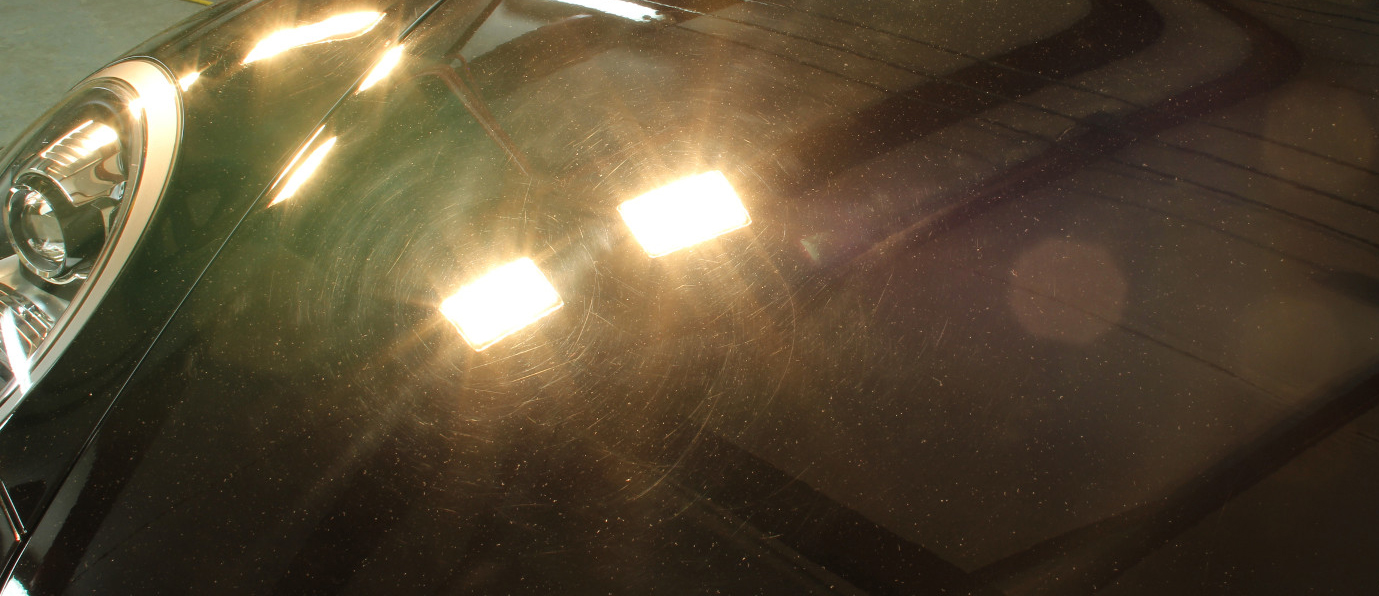
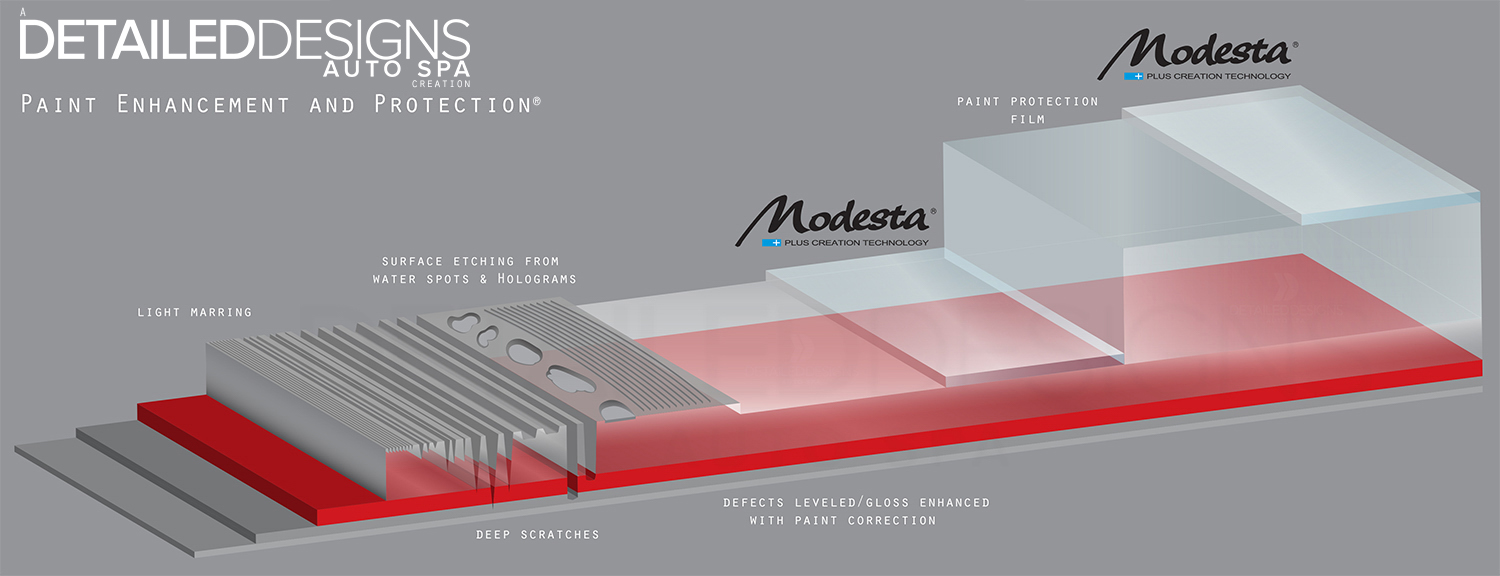
Rest well my friend! Well deserved
Awesome write up!
Awesome
Well done. Cler and concise description of the subject matter
This coming from you means the world to me, Jon. Thank you so much!